I’m facilitating a peer learning project on practical networked leadership skills for emerging nonprofit leaders. As we all know, living in a networked world creates opportunities for abundance. But having many choices and opportunities requires developing a special set of skills in order to be successful. These skills are: self-management and attention training. That’s the focus of one of the sessions – so I have been reflecting a lot on this topic to come up with some useful exercises, discussion questions, and session content.
Over the past few years, people often say to me, “I don’t know how you get it all done.” To tell you the truth, I no longer think in terms of “getting it all done.” I don’t bother with time management techniques because in a networked world, they don’t work – that is industrial age thinking. What is more important is managing your attention and energy. That translates to redesigning the way you work. A day that translates to 10 or 12 hour non-stop multi-tasking marathon is not a formula for success, but for burnout. Some workplace cultures in nonprofits encourage this approach.
As I have incorporated the concept of walking as part of work, it made me re-think how I get work done. It prompted research and reading to find some ideas to test out on myself before using it in the leadership development program. I have found the work of Tony Schwartz, The Energy Project and his best selling book, “The Way We Are Working Isn’t Working” to be valuable. His approach is about helping employees get energized to help transform organizations. In his words:
“For nearly 15 years, I’ve been making the case — in my writing and with corporate clients — that employees can be more productive by working fewer hours and taking more time for rest and renewal during the work day.”
The secret to being productive in a connected world without working 24/7, is designing your work day around something called Ultradian Rhythm. As Tony Schwartz has reported, this was first discovered by a sleep researcher Nathan Kleitman found that the 90 minute basic rest-activity cycle is not just part of our sleep, but with us during the day. During this 90 minute cycle we move from higher to lower alertness and our energy waxes and wanes in these cycles throughout the work day.
How can you use this science to help you be more productive? The Buffer Blog has a detailed post for social media professionals who have to squeeze as much productivity out of their days as possible. Here are some simple tips that I found that worked:
1) Design Your Work Flow to Align with Your Body’s Ultradian Rhythm: I don’t write to do lists anymore. Instead, I design my work day to make the most of my energy and focus. I block out about four 90-120 minute time blocks with the 10-20 minute breaks (for a brief walk) in between. This includes tasks I do alone and with others. This means I have to be careful about scheduling my too many back-to-back work chunks without breaks which can be an energy and productivity zapper.
2) Accept Your Limits: I used to create a huge, big to do list and think that I could get it all done if I just worked long, long hours. If you have 8-10 hour day, you can realistically get 4 big chunks of work done. I also don’t fool myself by trying to cram in more than I can realistically get done each day. This helps me be really focused on priorities. It helps preserve energy and focus. I have also let go of beating myself up because I can’t get more stuff done.
3) Start Early: For many people, your ability to focus it better in the morning (assuming you got a good night’s sleep). I try to schedule time blocks that require high level concentration tasks (like writing) in the morning when my brain is better able to concentrate. Also, if you jot down a priority list the day before, you can get to work in the morning without wasting time.
4) Don’t Multi-Task: I try to avoid wasting my high energy spurts with “bouncing” around to and from smaller tasks or trying to work in several projects at the same time. I don’t get anything done well that way. Sometimes the work I have to get done during a 90 minute sprint can be broken down into 3 thirty minute segments or two 45 minute segments. Being a data geek, I’ve been tracking myself on how long it takes to do particular types of work tasks and also record a concentration level and energy level (these are subjective). This way I can be more accurate in planning my work flow. It is important to do that because some tasks may more attention or energy draining than others or your natural rhythm might be 120 or 100 minute cycles.
5) Avoid Interruptions: Whether it is your online notifications or someone stopping by your desk to chat, try to reduce distractions. One thing I try to do is avoid constantly checking email or social media – and save that for break times or as transitions between sprints. Then, I might use a sprint to tackle processing email.
6) Make It A Team Effort: Many of us how to work with other groups or teams of people. If you design your work flow as a team so it aligns with everyone’s natural ultradian rhythms, it might make everyone productive.
It isn’t all about how you work, it is also how you reboot your energy. If your idea of a break is to answer email for an hour, that isn’t really a revitalizing break. Your break has to be restorative.
I found mini-walks, whether walking around the office or the block to be really useful. The simple act of getting up and taking a few steps can be like rebooting your computer when it is slow.
Some people find mini-meditation to do the same – and there are lots of apps like Headspace that can help teach you to do this. I also used to feel “guilty” for taking a break because I used to think that it would make me less productive. But, taking breaks help you recharge have a huge benefit in the long-run.
What is your secret to being productive? Do you manage your energy versus your time? Is this part of your nonprofit’s work culture?
